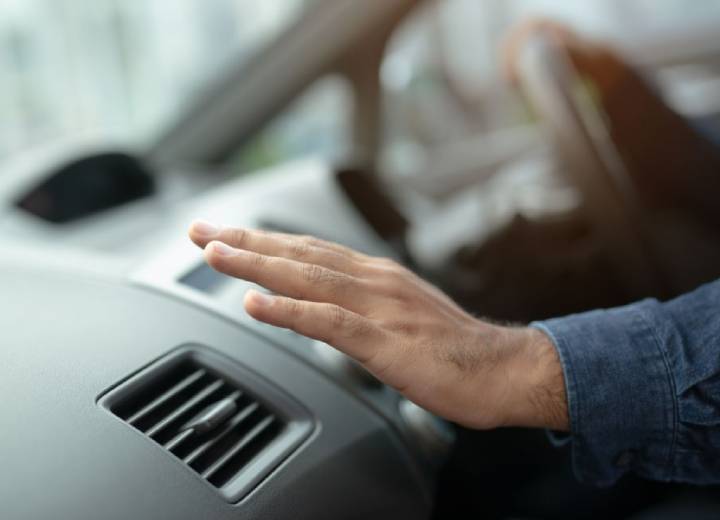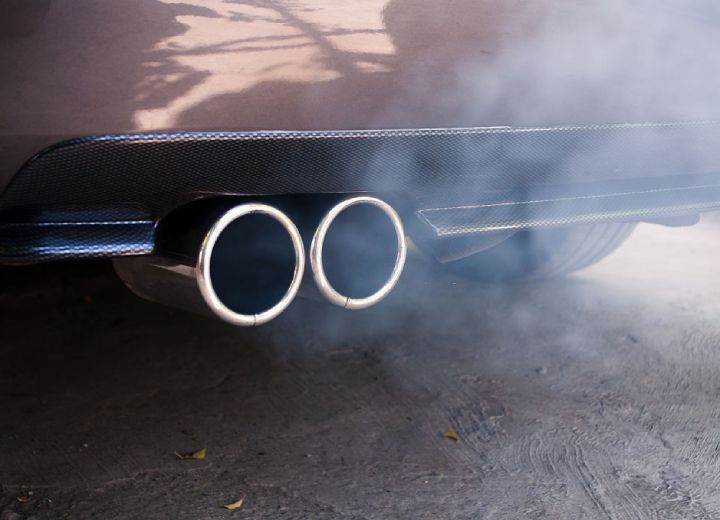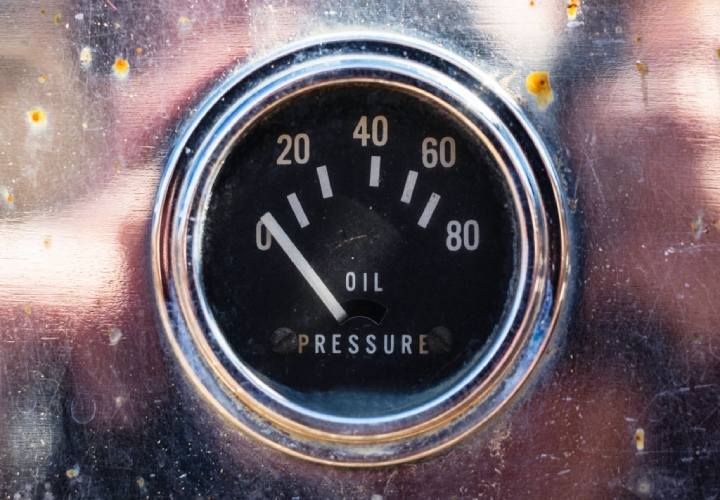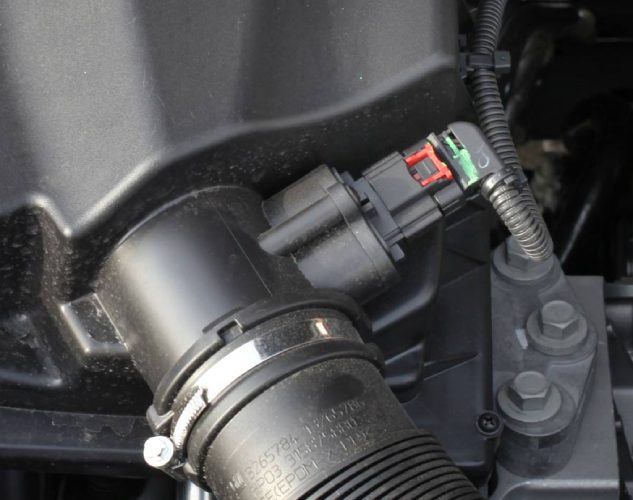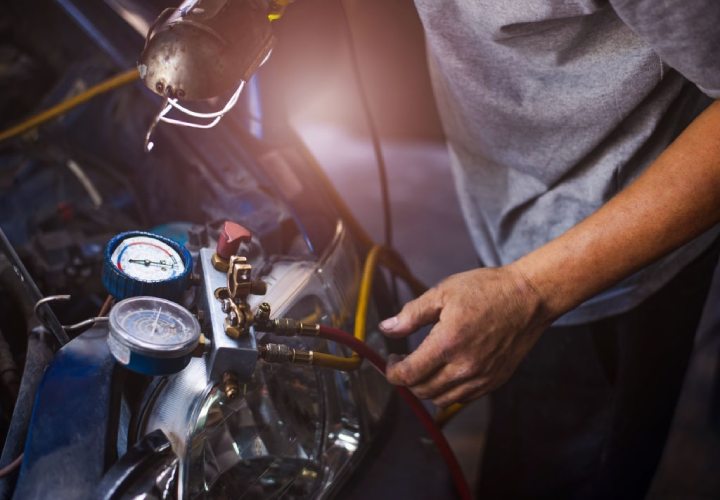The lights on your dashboard are preset to illuminate when there’s something wrong with any of the connected systems or parts. When these warning lights illuminate, it could indicate the need for a service and, at other times, alert the driver of a faulty system. Warning lights are very important, and their illumination should be considered important.
One of such lights that alerts the driver about the normal functioning of the car is the “AT Oil Temp.” What does this warning mean for your vehicle? And how should it be treated? This article discusses these questions.
What does AT temp light mean?
The “AT Oil Temp” means the automatic transmission fluid is at a high temperature. If the transmission is overworked or the transmission fluid is below normal quality or level, the transmission overheats and causes the fluid to overheat as well.
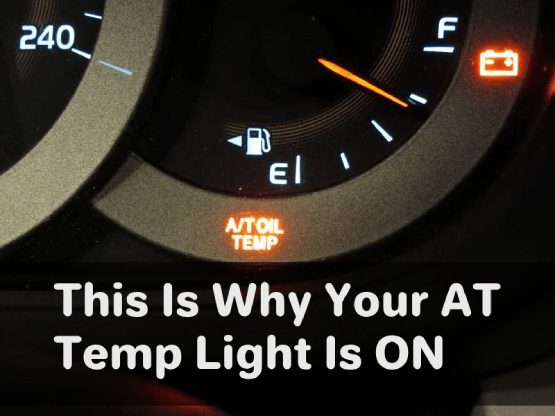
Engine oil is needed to lubricate the engine’s moving parts, preventing overheating and friction. Similarly, the transmission also requires its specific oil – transmission fluid. The transmission fluid needs to be in sufficient quantity and quality to prevent overheating and friction in the transmission.
If you notice that the AT temp light starts flashing once you start the car, you might not be dealing with a hot transmission fluid here. There might be an issue with the transmission control module, which is causing the transmission to behave erratically. The problem might persist till a certified expert handles it.
Related content: Can I Drive With a Bad Transmission?
What causes transmission overheating?
Low fluid level
Your car’s transmission needs the transmission fluid to lubricate its part and facilitate its effective operation. Hence, if the fluid’s level is low, the transmission reacts by overheating. The level of the fluid can be checked by pulling the transmission dipstick. You can locate the dipstick and learn how to read the levels by checking your user’s manual.
Faulty solenoid
Since the solenoid controls the amount of fluid that goes through the transmission, a failing solenoid will impact the transmission. Hence, insufficient fluid goes through the transmission when your solenoid fails, and overheating might occur. Further inspection of the problem should be able to spot a bad solenoid. Once this is spotted, the solenoid should be replaced.
Leaks
Any leaks in the transmission will reduce the fluid needed to lubricate the transmission. Without sufficient fluid, the transmission will overheat. The transmission should be inspected for any signs of visible leaks.
Old or dirty fluid
The cause of your transmission overheating might result from an old, dirty, or burned fluid. When transmission fluid is newly poured into the car, the color is translucent and clean. Good transmission fluid means your car would be able to go long miles on the road without transmission issues. However, as time passes by, the transmission fluid gets old, and dirt accumulates in it. The color of the fluid starts changing. Once this occurs, the fluid loses most of its functionality and results in transmission overheating.
If the transmission starts overheating due to dirty fluid, there is a high chance the transmission’s heat will burn the fluid. The moment the fluid burns, the fluid becomes less effective, and the transmission overheating is fueled by poor fluid. Burned fluid can be detected immediately by its smell. Although you might not be able to tell if your transmission fluid is dirty without inspection, burned fluid is impossible to miss and might even save you a lot of trouble trying to narrow down the cause of the overheating.
Related content: Can ABS Sensor Cause Transmission Problems?
Can I drive with the AT temp light on?
Yes, you can drive with the AT temp light on, but it wouldn’t be best to extend your drive or go on subsequent drives if the light does not go off. The first thing to do after seeing the light is to park the car safely and allow the engine to rest while the transmission fluid cools down. The light should turn off itself after a while, but if it doesn’t, you should seek further inspection at a certified workshop.
How do I cool down my transmission?
The transmission can be cooled by making the engine idle. Once the engine is resting, the transmission fluid will automatically cool down. Therefore, if you see the warning light (AT TEMP LIGHT) when driving, your safe bet at tackling the heat immediately is to park and allow the engine and transmission to cool down.
How do you fix an overheating transmission?
An overheating transmission can be fixed by addressing the source of the problem. If the transmission still overheats after allowing it to cool down for a while, you should look into the level of the transmission fluid. One of the common causes of an overheating transmission is low fluid level. If you top up the fluid and the issue persists, you should consider hiring an expert for further inspection.
At other times, old or dirty transmission fluid might cause the transmission to overheat; hence, once you are due for a transmission fluid change, it should be changed at once. Different car models have intervals for transmission fluid change. Check that of your car and change even before the interval is due to prevent the fluid from burning.
By checking the color, you can easily tell if your transmission fluid needs to be changed. If the color is running very dark and contains contaminants such as dirt, it is definitely due for a change. If the color is super dark and the fluid smells burnt, you should change it immediately as the fluid is no longer effective.
Related content: Do Transmission Stop Leak Products Actually Work?
Conclusion
The transmission fluid, presence of a leak, or a failing solenoid might not necessarily be the cause of overheating transmission. Sometimes, external factors such as stop-and-go traffic, high humidity, high heat, and excessive uphill grades, as well as driving habits (towing heavy loads or accelerating too fast) could place extra strain on the transmission, thereby causing it to overheat.
The transmission fluid should be regularly inspected; the color and the level affect its effectiveness. A transmission fluid change should not be missed; preferably, a change should be done before the interval is up.
Sources
Transmission Overheating? Here’s What You Need to Know
Reasons Your Transmission is Overheating
My name is Jeffrey Williams and I have been a car mechanic for over 35 years. I am currently working NYC Auto Repair Shop, in New York City and recently developed a strong passion about blogging. I decided to put together this blog where I will try and answer the most commonly asked questions I get on a daily basis from my customers.



